Table of Contents
ToggleSamburu National Reserve is situated in Kenya’s Samburu County. Samburu is an arid land that is steeped in culture and traditions, where people, livestock, and wildlife walk side by side, sharing precious resources.
Wild and remote, it is a very rewarding Kenya safari destination with a strong wilderness appeal, fantastic wildlife viewing and stunning natural beauty. It is also quite compact and easy to get around, with lots of interesting community conservancies nearby. For all of these reasons, Samburu is one of best safari parks in Kenya.
But because it is in the far north, it only sees a fraction of the visitors when compared to the parks on Kenya’s southern safari circuit like Masai Mara and Amboseli.
Best Things To Do In Samburu
- See the Samburu Special 5: Gerenuk, Grevy’s zebra, Beisa oryx, Reticulated giraffe, and Somali ostrich
- Learn how the Samburu people’s way of life slightly differs to the Maasai.
- Stay in authentic safari accommodation that ranges from Bedouin-style tents to lodges built into and around a giant volcanic rock face.
- Tick off at least 450 recorded species of bird, including vulturine guineafowl, Somali bee-eater, golden pipit, Kori bustards, and Secretary birds.
- Walk with knowledgeable local Samburu guides through a hilly landscape dotted with magnificent outcrops.
- Ditch the 4×4 safari vehicle and embark on a camel trek to explore the scrubland.
- Be charmed by the real-life tale of Kamunyak, a bereaved lioness that was famous for adopting and protecting an orphaned gazelle in the early 2000s, and whose story was told in the film Heart of a Lioness – read the full true story at the entrance to Samburu Reserve.
Why Visit Samburu National Reserve?
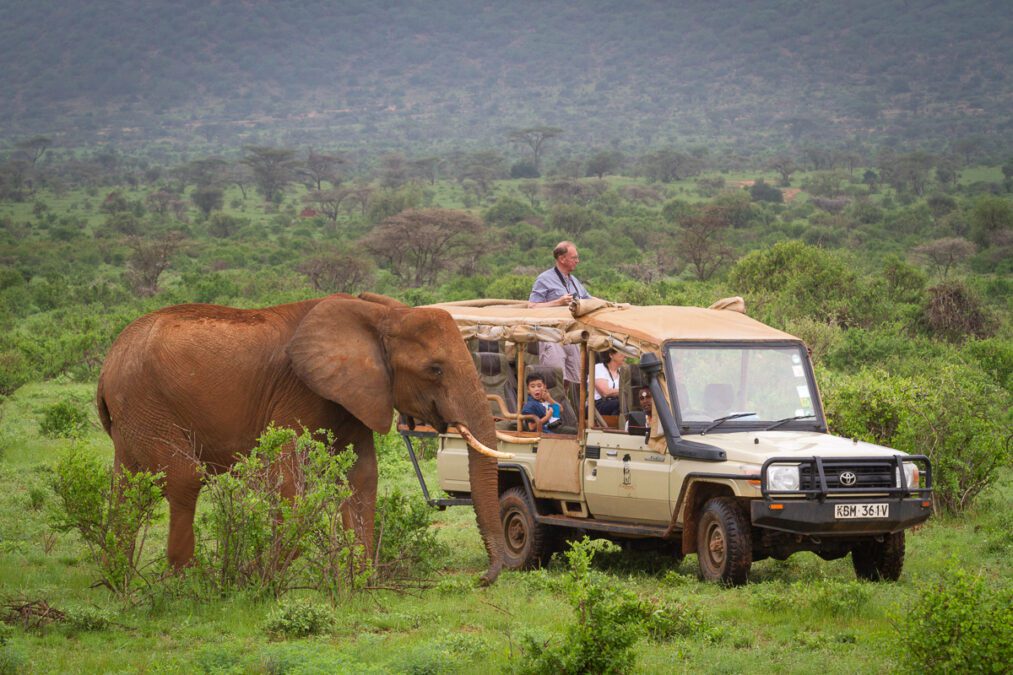
Samburu is considered a gem among discerning African safari goers because it is relatively uncrowded than the more popular southern Kenya safari areas.
Unlike Amboseli National Park, it attracts few self-driving visitors over weekends or during school holidays.
It also never reaches the fever pitch of the Masai Mara National Reserve during the Great Wildebeest Migration, when a lot of visitors arrive to view the spectacle.
You may have to work harder to find animal sightings but, when you do, the reward is that much sweeter. And you are likely to have few other safari vehicles around you.
The big cats are found here as are unusual wildlife species. It is a very satisfying destination for seasoned travelers.
It is an excellent option if you have been to Kenya before or are looking for more of an off-the-beaten-path safari destination that still has plenty of creature comforts.
Where is Samburu National Reserve Located?
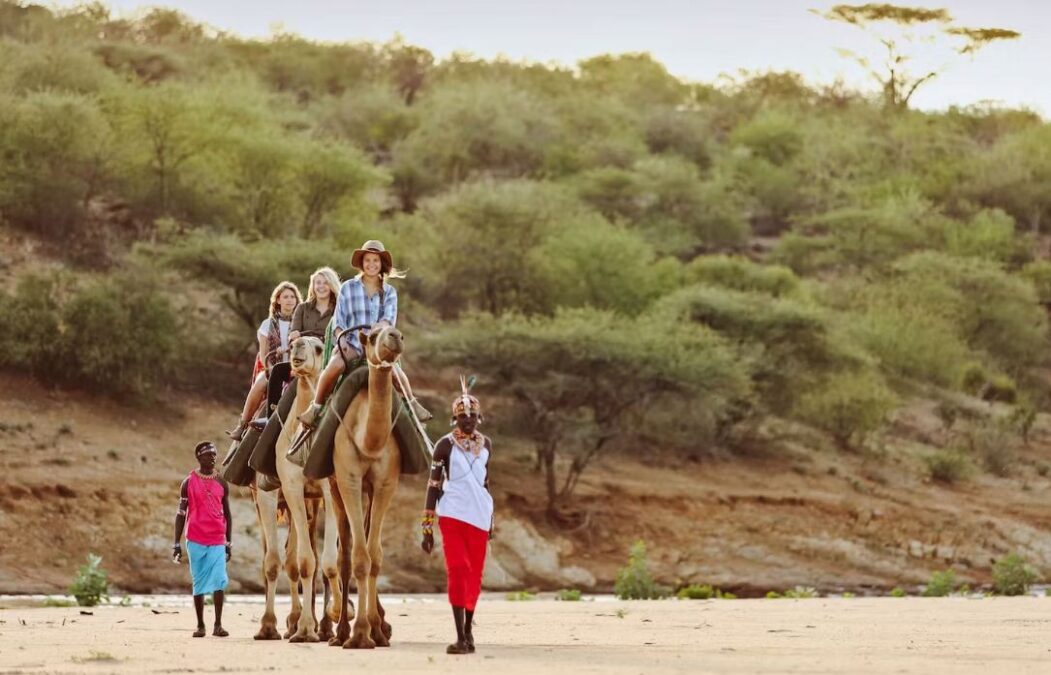
Samburu National Reserve lies in northern Kenya’s Samburu County.
Spanning some 165 km2, Samburu belongs to a trio of fantastic parks that strung out along the Ewaso Nyiro River.
The river runs through the reserve and is its heartbeat; without its precious water the animals would not survive in the otherwise semi-arid environment.
In addition to Samburu are Shaba and Buffalo Springs National Reserves.
They’re effectively part of the same ecosystem, with many of the similar wildlife species and landscapes. Together they increase the chances that you’ll find what you’re looking for on your tour. And an entry permit for anyone of the 3 will offer you access to the other two reserves.
Also surrounding Samburu is a mosaic of operational conservancies that expand the habitat available to wildlife.
These conservancies are not exclusionary wilderness areas – the local communities reside here and raise their livestock alongside the wildlife while simultaneously offering tourism pursuits.
Given that 65% of Kenya’s wildlife is found outside formal reserves and parks, conservancies are vital to the conservation of the country’s wildlife.
A little farther afield to the north, there is the forest-clad, wildlife-rich wilderness known as the Matthews Range, as well as the hiking trails of Ndoto Mountains.
A similar distance to the south is found the Laikipia Plateau, a land of staggering natural beauty and biodiversity. Here you will several private wildlife conservancies like Ol Pejeta where you can see all the Big Five animals.
The Samburu Tribe
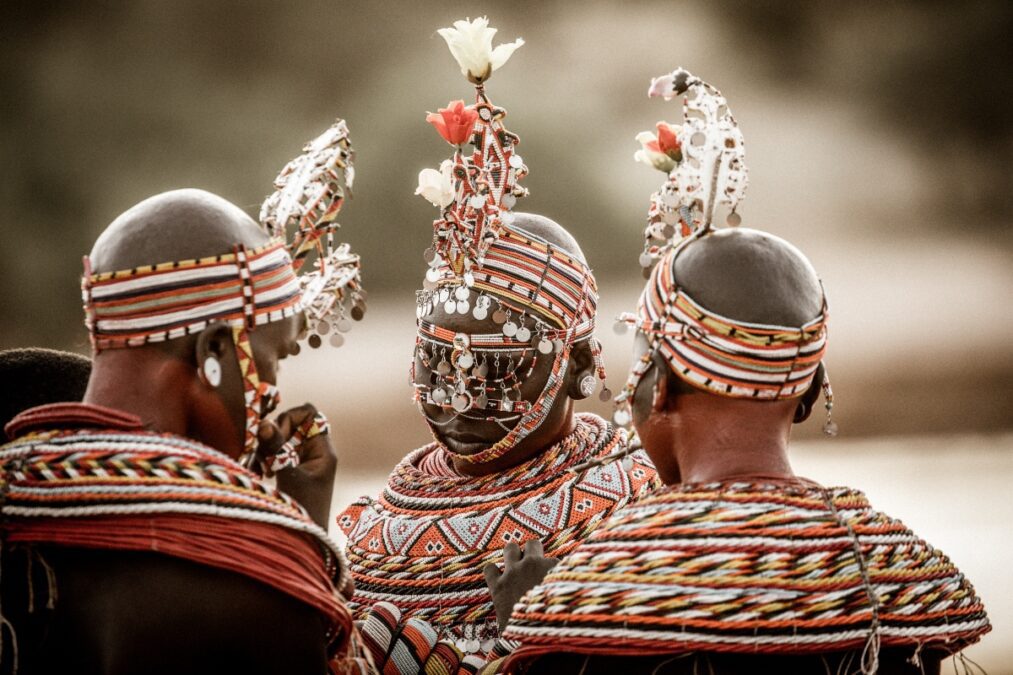
Samburu National Reserve is named after the local Samburu people, who are semi-nomadic pastoralists and whose vivid traditional attire is among the most beautiful and delicate in the world.
The Samburu People still reside in traditional villages called Manyattas that can be moved to follow fresh grazing for their cattle, camels, goats and donkeys.
Camels were introduced to Samburu land during some point when trading Arabians arrived in the area. And, of course, these desert creatures thrive in this semi-desert environment.
This one of the few places on African continent where you can enjoy a camel trek: set off to find wildlife, led by your knowledgeable Samburu guides.
The Samburu guides freely share their knowledge of land and traditions, and visitors to the Namunyak Conservancy can tour the local “Singing Wells”. Here, the Samburu warriors gather in the dry riverbeds to dig wells to satiated their livestock, singing haunting traditional melodies as they work.
What Animals Are in Samburu Game Reserve?
While Samburu is a peaceful game park that is much quieter than most of east Africa’s other reserves, it still boasts an incredible wealth of classic African safari big game species.
1. Elephants and buffalos
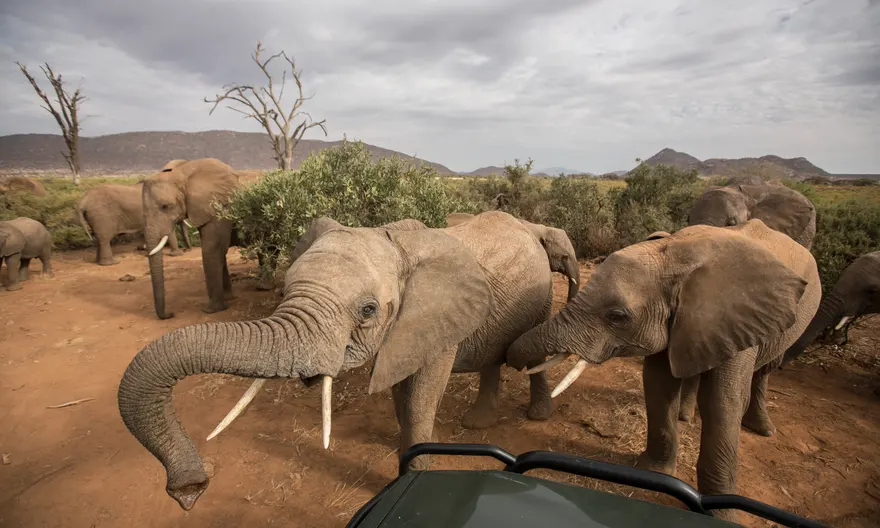
The reserve is a haven for elephant. And it is home to the headquarters of Save the Elephants, established by Iain Douglas-Hamilton, meaning that the elephant here are some of the most extensively studded in the world. Buffalo are common in the wetter areas and riverbanks.
2. Big Cats/Predators
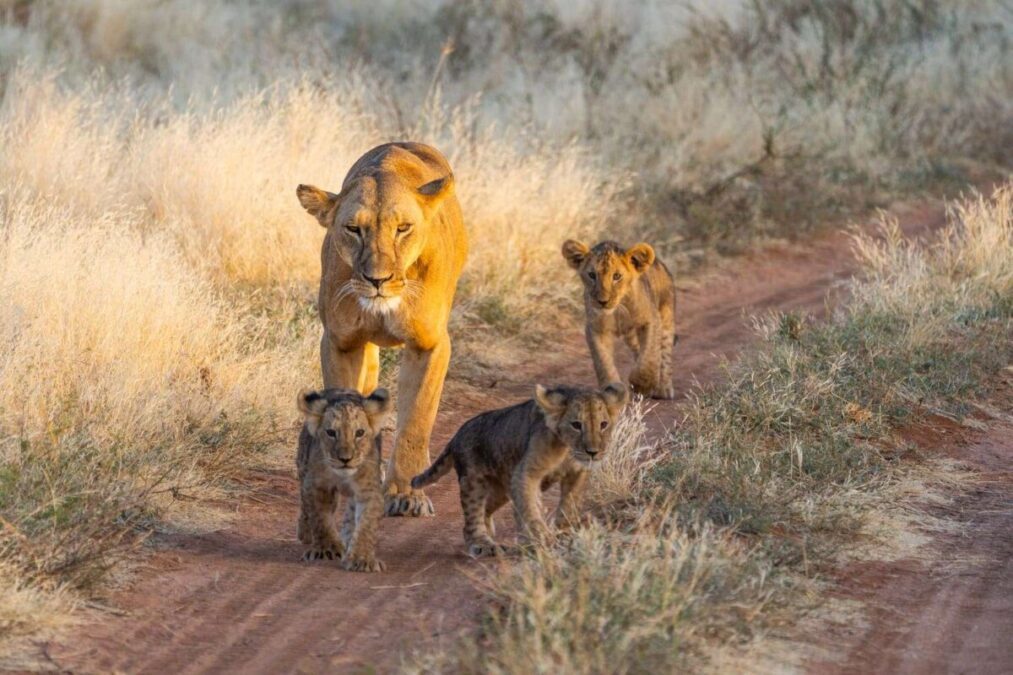
Samburu National Reserve is also a predator haven for three Big Cats (lion, leopard, and Cheetah), African painted wolves (Wild dogs) and even the rare and elusive striped hyena. The Ewaso Ng’iro river also contains some massive Nile Crocodiles.
3. Rhinos
Though rhinos are almost entirely extinct in Samburu National Reserve, visitors to the Sera Community Conservancy can spend time tracking newly introduced black rhinos on foot in this massive 540km2 sanctuary. Given the notoriously cheeky nature of these remarkable animals, this is guaranteed to be a thrilling experience within the safe parameters laid out by expert Samburu guides.
4. Birdlife
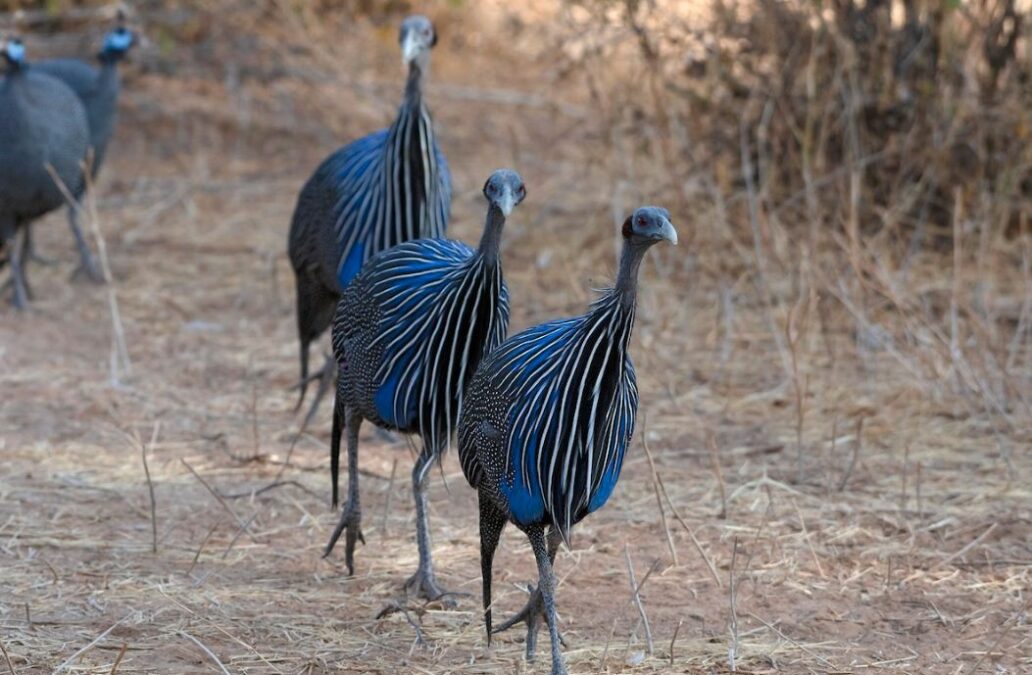
As it occupies such a unique position between desert and savannah, it is only to be expected that the bird on offer in Samburu would be sublime. Over 450 species have been recorded.
There are several coveted endemic and arid specials to be found across its heterogeneous landscapes. Some bird species to watch include the charismatic vulturine guineafowl, Somali bee-eater, golden pipit, lesser kestrel, the taita falcon, D’Arnaud’s barbet, and rosy-patched bush-shrike.
5. Special Dry-country antelopes
Samburu National Reserve is also well known for its unique dry-country antelopes. These include lesser kudu and the adorable (and ubiquitous) Kirk’s and Gunther’s dik-diks. For animal and safari lovers, however, one of the biggest and most exciting reasons to visit Samburu National Reserve are the quasi-endemic wildlife species found here that have adapted to the more arid and hillier conditions.
While Amboseli National Park has its impressive elephant herds and the Masai Mara National Reserve boasts millions of wildebeest and Plains zebras during the Migration, Samburu has the “the Samburu Special Five”
What are the special five of Samburu?
You may have heard about African Big 5 animals, now meet the Samburu Special 5!
1. Gerenuk or giraffe gazelle
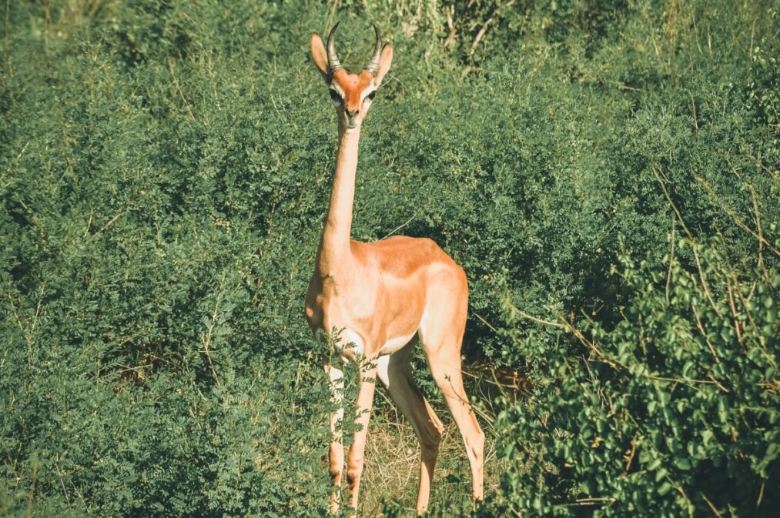
Nothing can really prepare a person for their first sight of a gerenuk in the wild. Gerenuk means ‘long necked’ in the Samburu language and they do indeed have comically long necks.
Looking for the world like a stretched-out impala, these peculiar antelope also have massive ears compared to their small heads, making them undeniably cute.
Formerly known as Waller’s gazelle, the Samburu people consider them to be very humble creatures that are always willing to come to the aid of fellow gerenuks. They have sturdy hind legs and can stand on them for a long period of time while grazing leaves that other antelope are too short or giraffes too tall to reach.
2. Somali ostrich
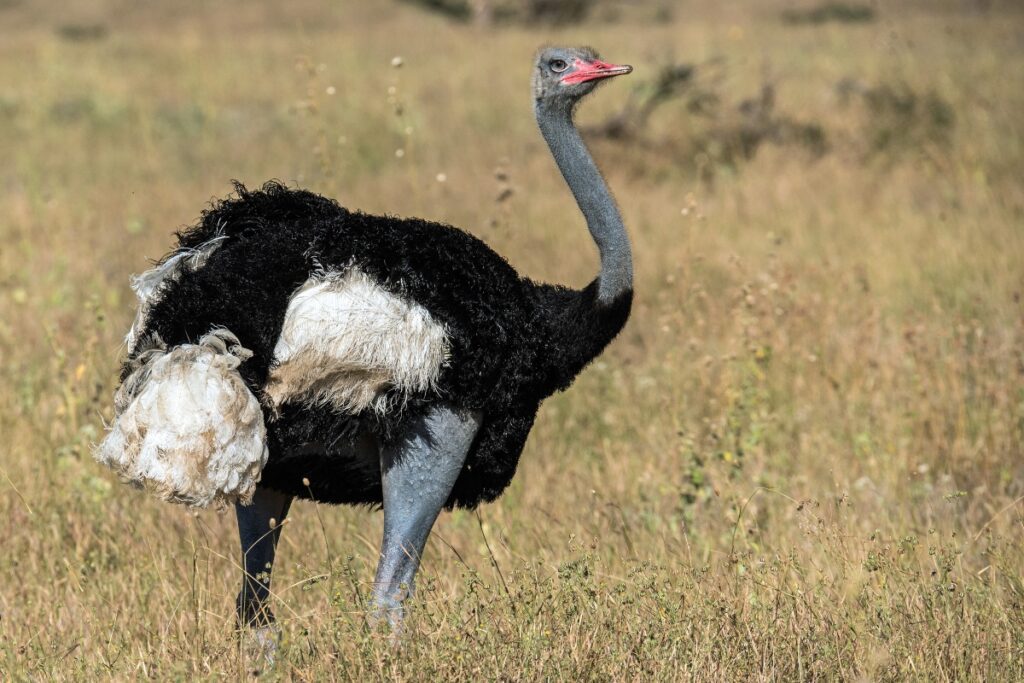
The Somali ostrich was only recently identified as a separate, rather than a subspecies of the common ostrich which is found through most of Africa. Somali ostriches are native to the Horn of Africa. They are also sometimes referred to as the blue-necked ostrich. During courtship the necks and legs of the males turns blue instead of flushing pink!
3. Grevy’s zebra
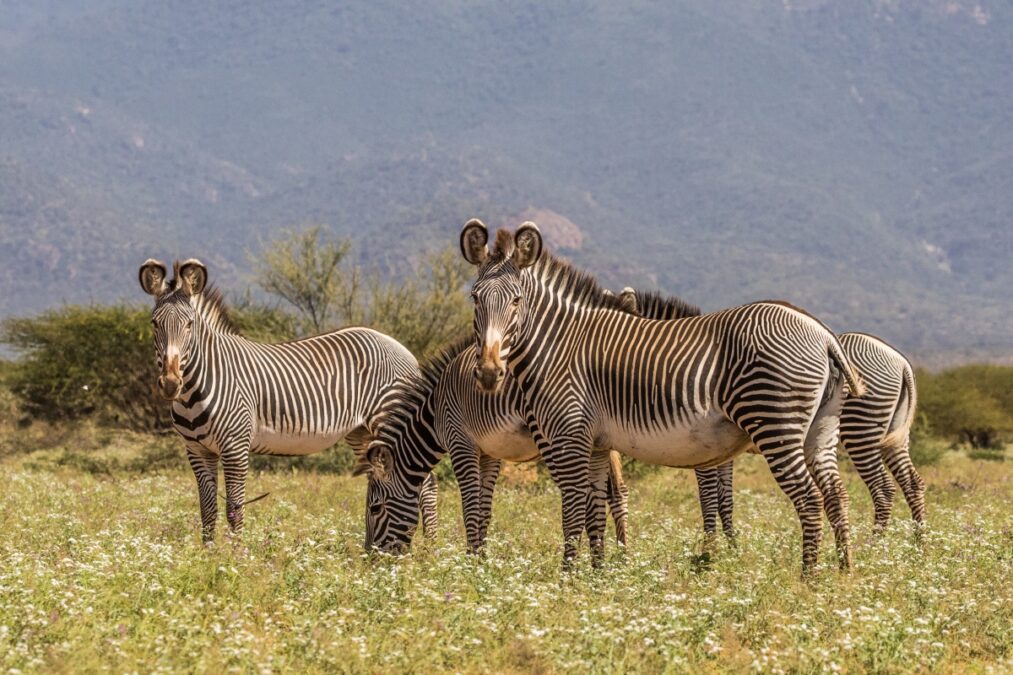
The endangered Grevy’s zebra is the largest of the three species of zebra and quite possibly the most attractive. They can be easily distinguished from their Plains zebra cousins by their large ears, neat and close-set stripes, white bellies, and fawn-coloured muzzles.
The majority of the remaining wild Grevy’s zebras are found in northern Kenya, with some small and isolated populations in Ethiopia. Rightly known as ‘imperial zebra’, they can live without drinking for five days in a row – a boon in dry conditions. Sadly, human demand for their beautiful hides has made them the most endangered of all zebra species as they are killed for their skin.
4. Reticulated giraffe
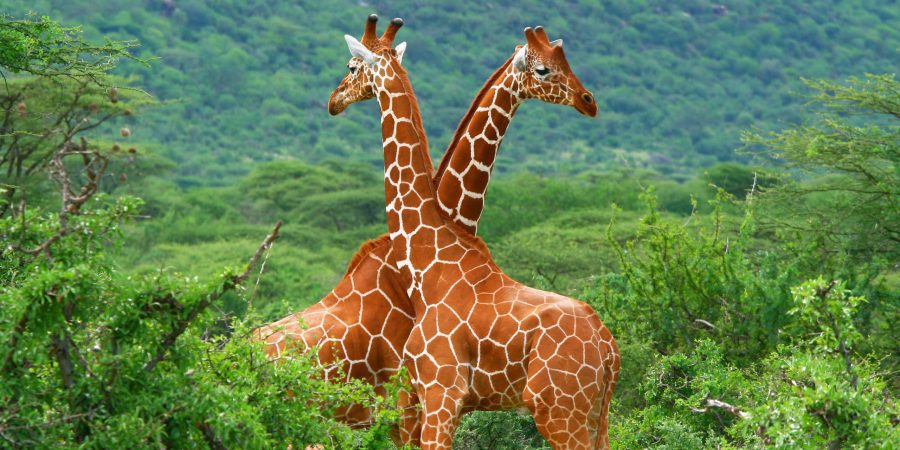
These giraffes are almost instantly recognisable because of their big, ‘liver-coloured’ rosettes that are very different to the lighter and smaller patches of their southern cousins. They are the rarest of the giraffe species after the Northern giraffe.
6. Beisa oryx
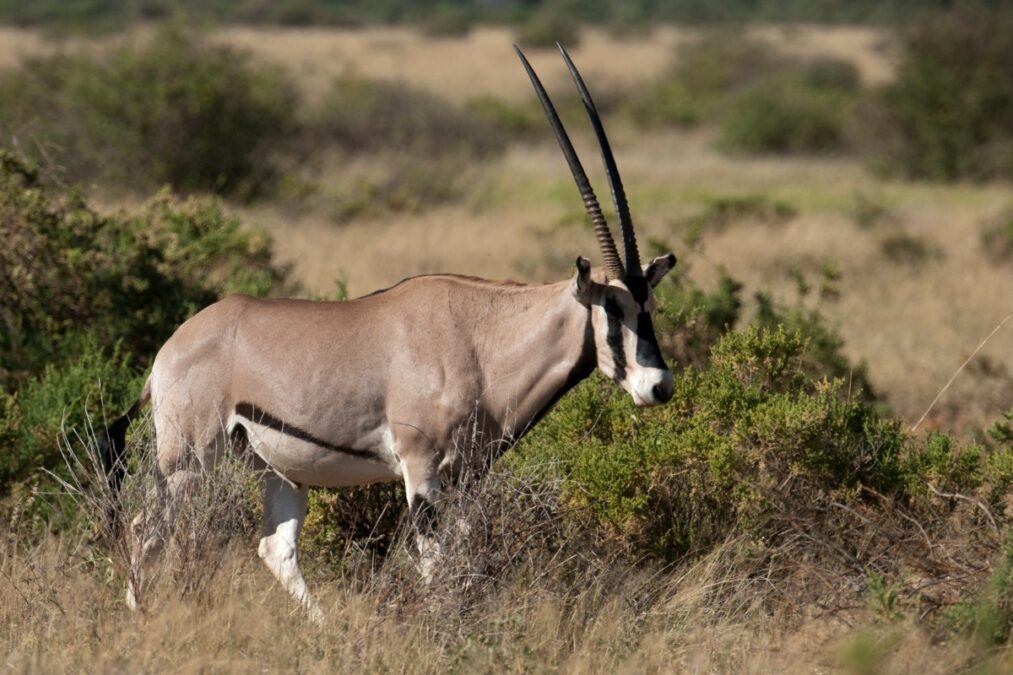
And finally, the common Beisa oryx is one of the two subspecies of the East African oryx found in Kenya. Both male and female Beisa oryx grow spear-like horns that can reach nearly a metre / 3 feet in length. Males will embark on ferocious battles with their horns during the rutting season to win females’ favour; occasionally you will find a male with only one horn, the other having snapped off during a fight.
Samburu National Reserve Weather
Located in a partly arid and partly semi-arid climate, temperatures in Samburu National Reserve average between 65 °F and 85 °F throughout the year.
Samburu has two rainy seasons – one between April and the second between October and November. Rainfall in general is low, with the heaviest rainfall occurring in April.
Best Time to Visit Samburu National Reserve
Due to its relatively low rainfall averages, Samburu National Reserve is largely accessible throughout the year. This also means the risk of malaria is low.
Wildlife viewing is at its best during the dry season months of June, July and August. The dry conditions make the animals easier to find and see since they will not move far from the Ewaso Ng’iro River, one of the few sources of water. But please note that it tends to get quite dusty and hazy, which can obscure the spectacular scenery somewhat.
Our Expert Advice
Add Samburu to a peak season safari in the Masai Mara National Reserve where you can see the Great Wildebeest Migration – one of the seven natural wonders of Africa. Samburu Reserve is also very rewarding during the rainy season about November to April. This is when the gentle rains make everything lush and green, and damp down the dust. It is also a perfect time to see migrant birds.
Where to Stay in Samburu National Reserve?
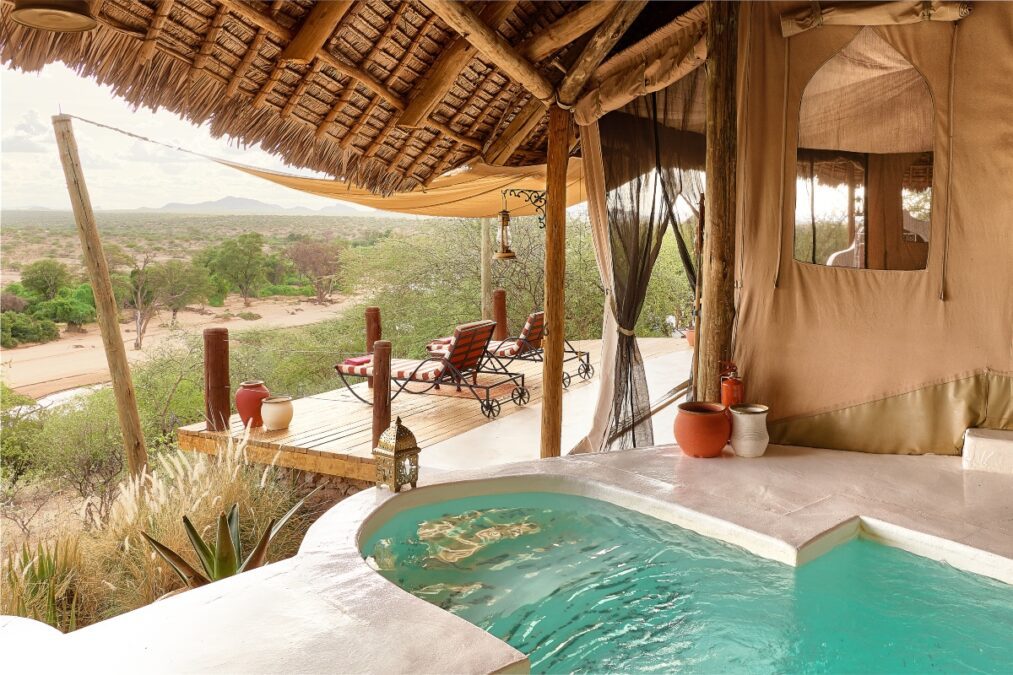
Samburu has some of the most spectacular accommodation in Kenya, thanks to its rocky outcrops and unusual combination of Samburu and Arabian influences.
If you are staying for more than three nights, then consider moving to a different lodge so that you get to experience a different part of the park and have different views.
Accommodation in Samburu ranges from budget camps to mid-range camps, right up to safari lodges and luxury accommodation in either tented or chalet-style. The best safari accommodating in Samburu National Reserve include:
- SaSaab
- Saruni Samburu
- Elephant Bedroom Camp
- Larsens Tented Camp
- Joy’s Camp
- Samburu Simba Lodge
- Samburu Sopa Lodge
- Ashnil Samburu Lodge
- Sarova Shaba Game Lodge
- Sentrim Samburu Lodge
- Samburu Game Lodge
How to Get to Samburu National Reserve?
By Road
Travelling from Nairobi city, the 6½ hour drive north takes visitors along the Thika and the Nyeri Katerina highway. There are five gates into the reserve, namely Archer’s Gate (the most popular), Kalama Gate, West Gate, Central Airstrip Gate and Uaso Bridge Gate.
By Air
Flights from Wilson Airport in Nairobi take about 90 minutes. Flights land in Buffalo Springs, Samburu Oryx Airstrip and Kalama Airstrip. Flying between destinations gives you more time on safari (tracking animals) and is also far less tiring than being driven.
Want To Visit Samburu?
Get in touch with one of our safari experts to help you tailor-make a Samburu safari today…
